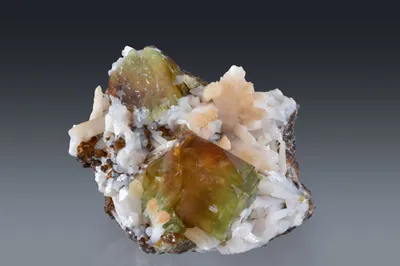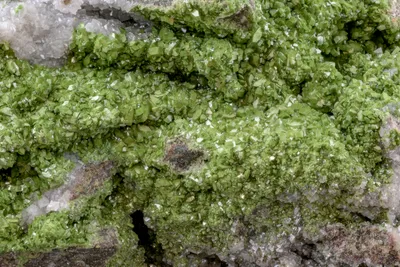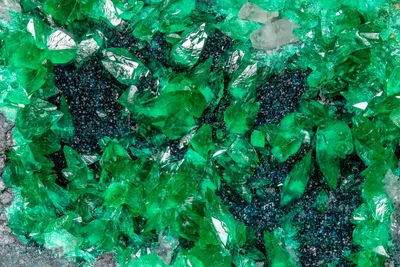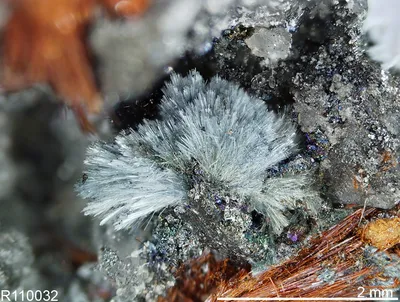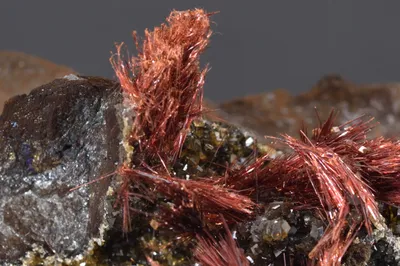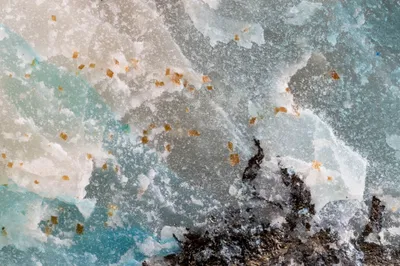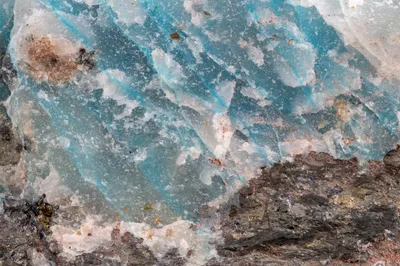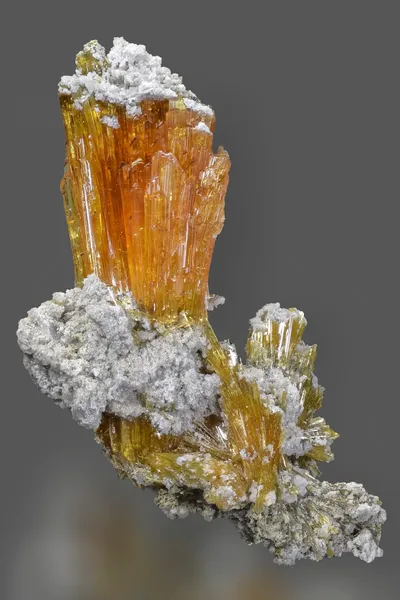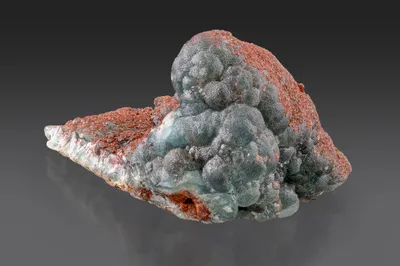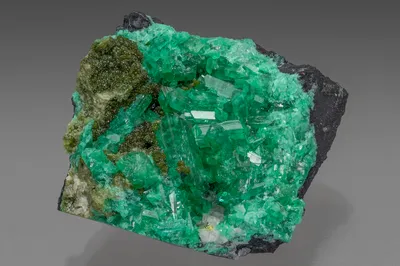Mineral Species
Helmutwinklerite
Type Locality
Yes
Composition
PbZn2(AsO4)2.2H2O
Crystal System
Triclinic
Status at Tsumeb
Confirmed (type locality)
Abundance
Extremely rare
Distribution
Second oxidation zone
Paragenesis
Supergene
Entry Number
Species; TSNB162
Type Mineralogy
In 1977 a number of mineral specimens were sent by Brian Woolfe (general manager) and Bob Schedler (mineralogist) of the Tsumeb Corporation Ltd., to the University of Göttingen in Germany. These included a specimen of corroded tennantite ore with two cavities, the first of which contained the new minerals koritnigite (Keller et al. 1979d) and warikahnite (Keller et al. 1979b). The second cavity contained quartz, willemite and an unknown arsenate of lead and zinc that was subsequently characterised and approved as a new mineral, IMA 1979-010, and named in honour of Helmut G. F. Winkler (1915-1980), emeritus professor of mineralogy at the University of Göttingen (Süsse and Schnorrer 1980). Helmutwinklerite is a member of the tsumcorite group of minerals. Type material is conserved at the Mineralogische Sammlungen, Mineralogisch-Petrographisches Institut, Universität Göttingen, in Germany (catalogue number 7.4.127.1).
General Notes
The level from which the type specimen was collected is not stated by Süsse and Schnorrer (1980). However, the first descriptions of koritnigite (Keller et al. 1979d) and warikahnite (Keller et al. 1979b) were closely related to the discovery of helmutwinklerite and in summarising these discoveries Keller and Bartelke (1982) attributed all three minerals (helmutwinklerite, koritnigite and warikahnite) to the East 9 Pillar on 31 Level.
Gebhard (1999) mistakenly stated that the mineral was first described in 1984 and goes on to mention a discovery on 30 Level, although it is not clear whether he is referring to the original occurrence.
On the type specimen, helmutwinklerite occurs as small transparent to translucent crystals in a cavity in corroded tennantite ore, accompanied by willemite and quartz (Süsse and Schnorrer 1980). The crystals are colourless to pale blue, with the blue colouration apparently due to the minor presence of non-essential copper (averaging 1.48 wt %) in the type material. The lustre ranges from vitreous (on crystal faces) to resinous (on fracture surfaces). Crystals of a sea-green colour have also been noted (Anthony et al. 2003).
Helmutwinklerite is a member of the tsumcorite group of minerals, the structural and compositional relationships of which are notoriously complex (Krause et al. 1998); the extent to which solid solution occurs between species such as helmutwinklerite – tsumcorite and helmutwinklerite – thometzekite is incompletely understood. Not surprisingly, therefore, helmutwinklerite is a difficult mineral to identify and ideally requires a combination of structural and quantitative compositional techniques. In the author’s experience, helmutwinklerite is a very elusive mineral.
In terms of paragenesis, Keller and Bartelke (1982) have highlighted the extensive suite of arsenates, many of them new and rare minerals, discovered in the East 9 Pillar on 31 Level. They suggest a sequence in which helmutwinklerite is an early-formed mineral resting directly on sulphide ore (see Keller and Bartelke 1982, page 145 – Table 1).
